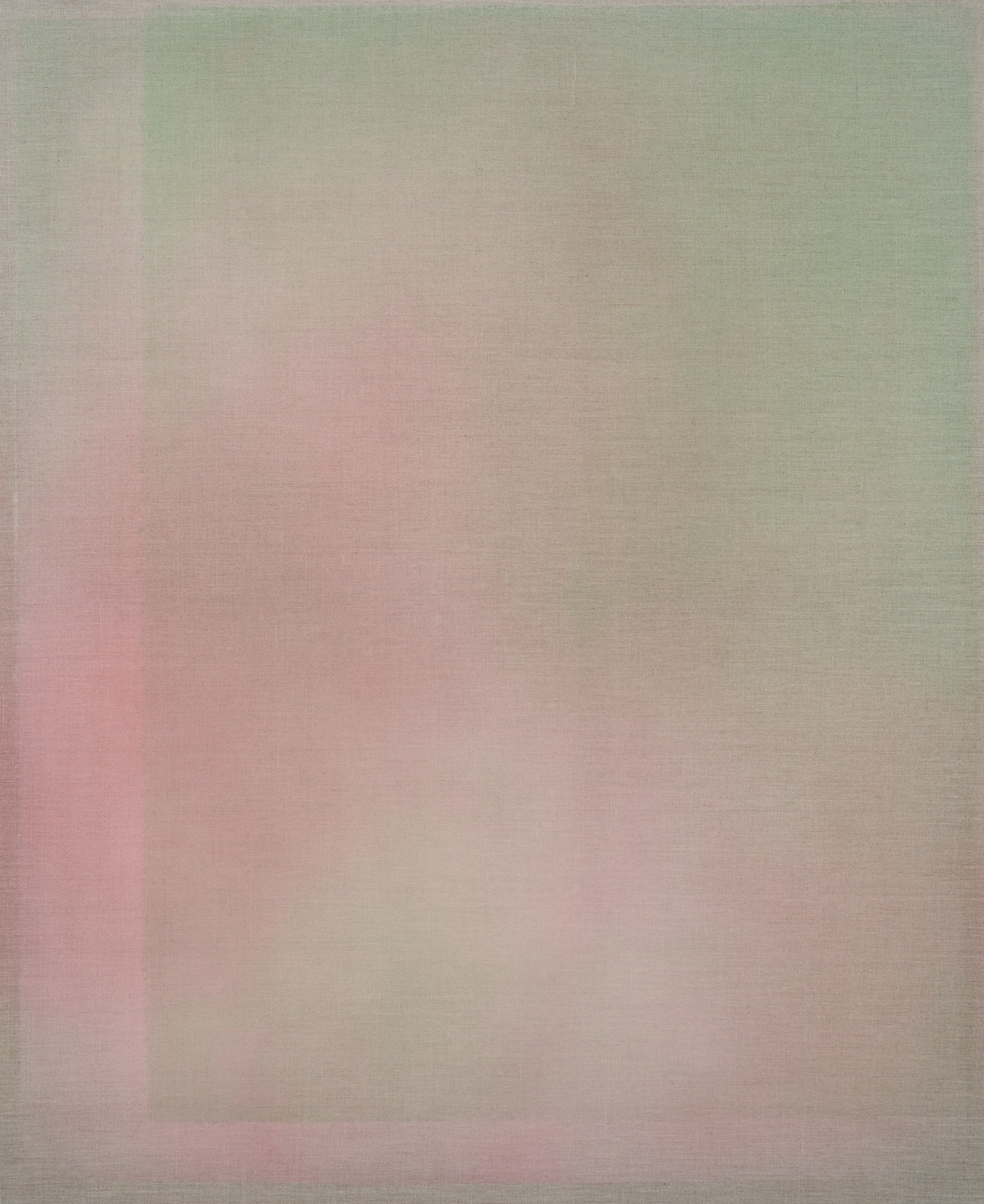Light Savour 2024
“Colour, as the most relative medium in art, has innumerable faces or appearances. To study them in their respective interactions, in their interdependence, will enrich our ‘seeing,’ our world—and ourselves.” - Josef Albers
After a drive back to the city from the bush at dawn, Marisa Purcell, mesmerised by the early morning light and its ability to shapeshift a landscape, drove straight to the studio and started work. With a lush palette of greens, she recreated the moment she had seen through the windscreen — night passing the baton to day, light carried on the fog and splintering through the trees. Purcell has long been interested in windows and frames — both what we see through a window and what we don't see. To the edges of her paintings are clues to what lies within, a cipher to decode the ceaselessly captivating ambiguity of light and colour. One painting calls to mind the experience of flash blindness; the moment when harsh light floods the retina, causing both an explosion of colour and a temporary loss of vision. Another is like a fragment of Monet’s Water Lilies writ large “Everyone will see a different colour,” she says, on the erraticism of light, perception and colour. “Like a lamp in front of a mirror, these works reflect their own source of light.”
To know what music an artist has listened to in the making of a show is to peek inside the gestation of the work, like an ultrasound during pregnancy. While painting these canvases, Purcell revisited Dostoevsky’s Crime and Punishment as an audiobook. But she also blasted SZA. It might be the most succinct way to capture what I see within her frames: the murky depths of self reflection but also the permission to give in to sweet relief. She plumbed the depths, but she danced her way out.
Written by Ariela Bard, 2024























